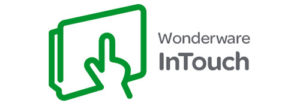
Industrial System Integration
What if an operator knew a motor needed oil? Or that a filter needed replacing? Or that a component was losing efficiency over time? Avoid unplanned shutdowns by integrating your plant systems into a supervisory system that paints a detailed picture about process states. Historical trends give you time-based data to analyze for efficiency.
We’re here to help you beat the competition. To stay competitive and avoid unplanned downtime industrial plants can now network all of the subsystems into one “Super System” to give plant operators, managers, and executives a birds-eye view of all processes in the plant.
Systems Integration empowers you to make the right decisions for consistent and reliable results.

Benefits of hiring USS to integrate your systems:

The benefits of integrating plant systems can make a huge different to your bottom line:
- Increased stability and reliability of system components
- Preventative maintenance
- Decreased downtime
- Increased productivity
- Increase overall system performance
- Batching
- Improved efficiency
- Higher quality
- Compliance
- Increased profitability
Our integrated systems can also include the historical logging of data for a complete picture of operational history for trend analysis that can help avoid unplanned downtime.
Historize Your Plant Data
Using process data to answer your business questions Historian stores and retrieves your process data in a way that allows you bring clarity to issues related to your business.
- Real-time data stores data as it comes in from the plant floor. Real-time data answers questions like “What’s the temperature of that tank right now?”
- Historical data can accept historical information from other systems and retains data captured in real time to use for historical reference. Historical data helps to answer questions like “What was the value of this tag every second last Monday?”
- Summary data summarizes certain data to help answer with big-picture questions like “What is the average number of bags produced each week?”
- Event data records process alarms and events as they happen. This data is used to find answers about when things happened; for example, “How often did that boiler trip last month?”
- Configuration data This data describes your system’s configuration and answers questions like “What types of I/O Servers am I using?” Process data analysis can help improve performance, enhance quality, and reduce costs.



Trusted Automation Partners









